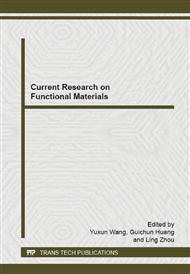p.50
p.56
p.61
p.69
p.74
p.80
p.87
p.93
p.97
Research on Shape Memory Effect and Corrosion Resistance of the As-Cast Fe-Mn-Si Based Alloy
Abstract:
Shape memory effect and corrosion resistance of the as-cast Fe-Mn-Si based alloy were studied in this paper. The results showed that the shape memory effect of alloy would decline with the specimen size increasing. Due to the ε martensites distributed in a single direction mostly and uniformly were not prone to the phenomenon of cross-crossing at the small size interface. The corrosion resistance of the as-cast decreased as the concentration of medium increasing. Because of the Cl-, which was easily absorbed by the substrate in the HCl solution, can penetrate the surface of the substrate film and generate the soluble compound, which leads the corrosion resistance performance poorer than that in NaOH solution. Under high temperature and pressure, the average corrosion rate of the Fe-Mn-Si-based shape memory alloy was significantly lower than that of the 304 stainless steel, and its corrosion rate changed little. Because the amount of harmful impurity elements and the carbon content is low in the shape memory alloy matrix, and the film formed on the surface of the alloy is more stable, denser so as to an unobvious pitting behavior.
Info:
Periodical:
Pages:
74-79
Citation:
Online since:
October 2014
Authors:
Price:
Сopyright:
© 2014 Trans Tech Publications Ltd. All Rights Reserved
Share:
Citation:


